Durable carbon fiber tripods for steady photos and videos.
Comparing carbon fiber vs aluminum tripods, carbon fiber tripods are much sturdier than aluminum ones, which means they're less likely to get damaged or need to be replaced. And they're less prone to corrosion, which is especially critical if you live in a place that's harsh on metals, like coastal areas.
Moreover, carbon fiber tripods are much lighter than aluminum ones, which makes them a lot more convenient to carry around. This is especially important if you're someone who travels a lot or if you need to move around quickly while taking pictures. Every ounce you can save in your camera backpack is worth it when you're carrying it all day long.
When choosing the best carbon fiber tripod, stability, weight, maximum load capacity, adjustable legs, twist locks, and protection from dirt and dust are all essential characteristics to consider. I hope this helps you choose the best device for your photography needs.
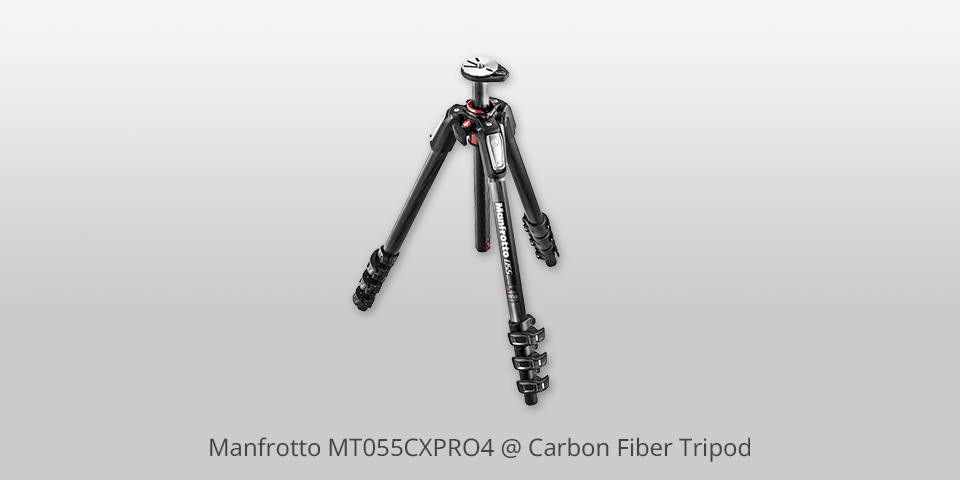
Head Type: Rotation | Min Height: 3.2" | Max Height: 66.93" | Max Weight: 17.3lbs
Firstly, this tripod for DSLR is incredibly lightweight, making it perfect for travel photographers who need a compact and portable support system.
Secondly, the MT055CXPRO4 is made of 100% carbon fiber, which makes it durable and highly resistant to vibrations that can ruin your photos. It's also very flexible and can be easily manipulated to fit any situation.
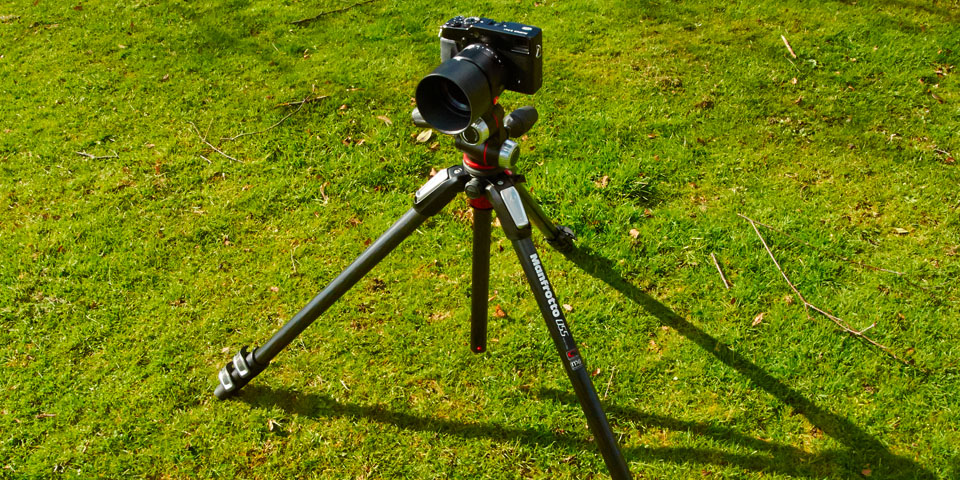
Being one of the best carbon fiber tripods, the redesigned center column of this tripod can pivot 90 degrees, which allows you to adjust the column horizontally and open up a lot of framing options. It's a great option for shooting in difficult positions and for photographers who want more flexibility in their compositions.
But one issue with this tripod is that the flip locks can loosen over time, so it's important to tighten them periodically. Another problem is that it can be a bit difficult to adjust the legs, especially when you're in a hurry.
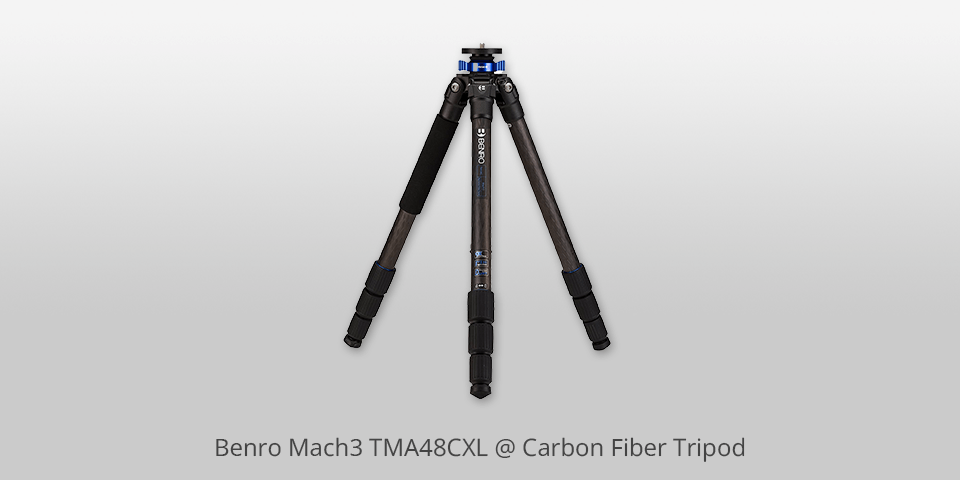
Head Type: Ball | Min Height: 14" | Max Height: 69.7" | Max Weight: 35.2lbs
The carbon fiber construction makes it incredibly lightweight and easy to carry around, without compromising on strength and stability. I've used it extensively with my DSLR and medium-format camera, and it's never let me down. It can handle a maximum load of 35 pounds, so it's perfect for those larger lenses or cameras.
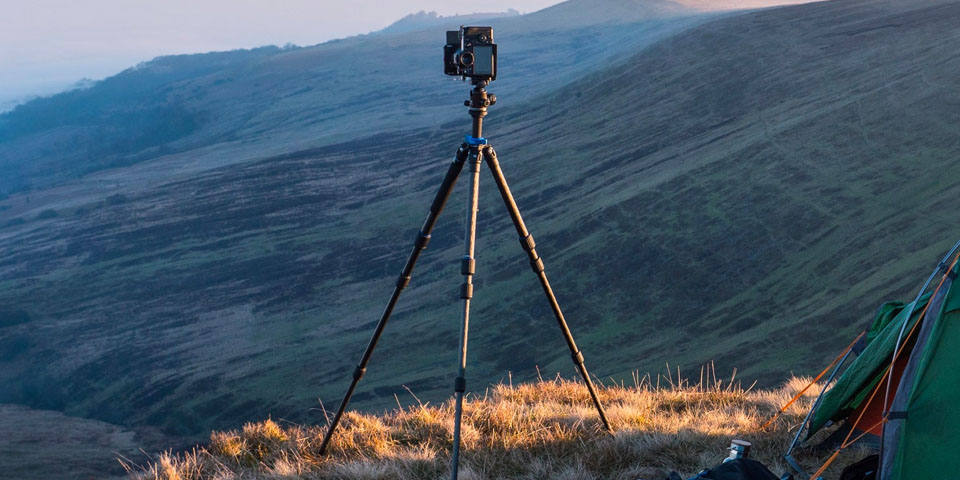
One of the standout features of this tripod is its quick-release center column, which retracts easily with a twist of the butterfly knob. This is great for when you need to quickly adjust your shot or pack up in a hurry. The rubber damper also provides extra protection for your camera when the center column is retracted.
However, there are a few downsides to this carbon fiber tripod. The first one is the price. It's definitely on the more expensive side, but I believe it's worth the investment if you're serious about your photography.
Additionally, the legs can be a bit sticky when they're first extended, but this is a minor issue that can be easily remedied with a bit of lubrication.
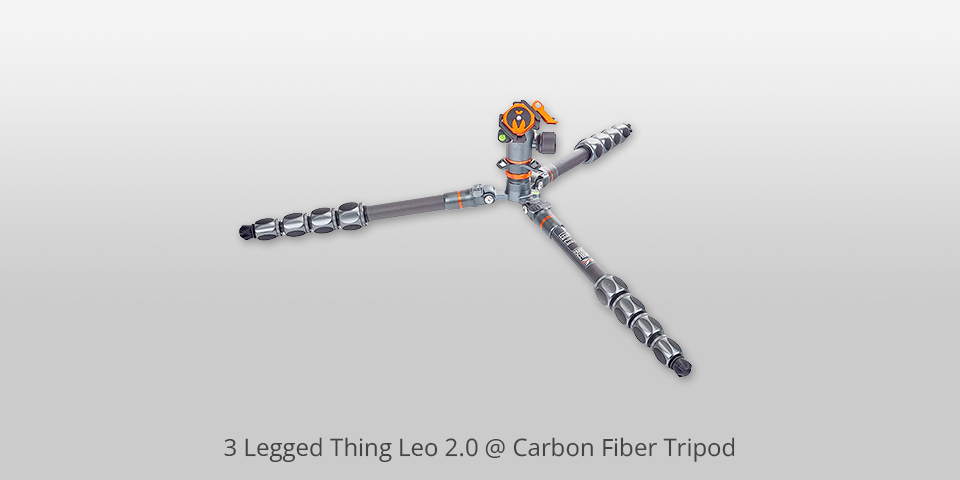
Head Type: Ball | Min Height: 8" | Max Height: 57" | Max Weight: 66lbs
First of all, let me tell you that this is a top-quality carbon fiber tripod designed for professionals. Its unique modular construction with three detachable legs and a removable center column makes it stand out. And it's available both legs-only or with a kit including an AirHed Pro lever ballhead.
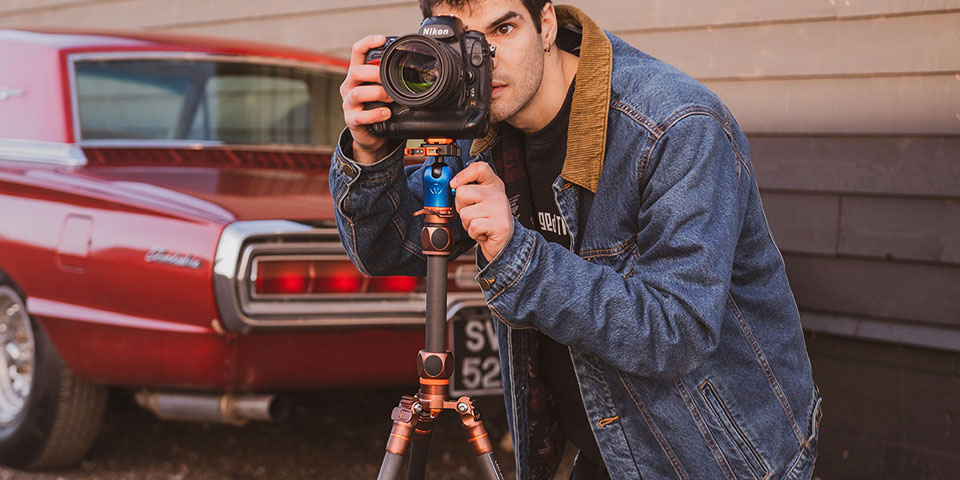
The Leo 2.0 also comes with three detachable legs that can be used to make it into a monopod, a boom arm, or a table-top model. This makes it one of the most versatile tripods on the market.
And its legs are made of Japanese carbon fiber that doesn't delaminate in water and has a coating that repels salt and other corrosive substances.
However, there are also some disadvantages to the 3 Legged Thing Leo 2.0. One of the biggest ones is its price point. It's a bit expensive for a travel tripod, and not everyone can afford it.
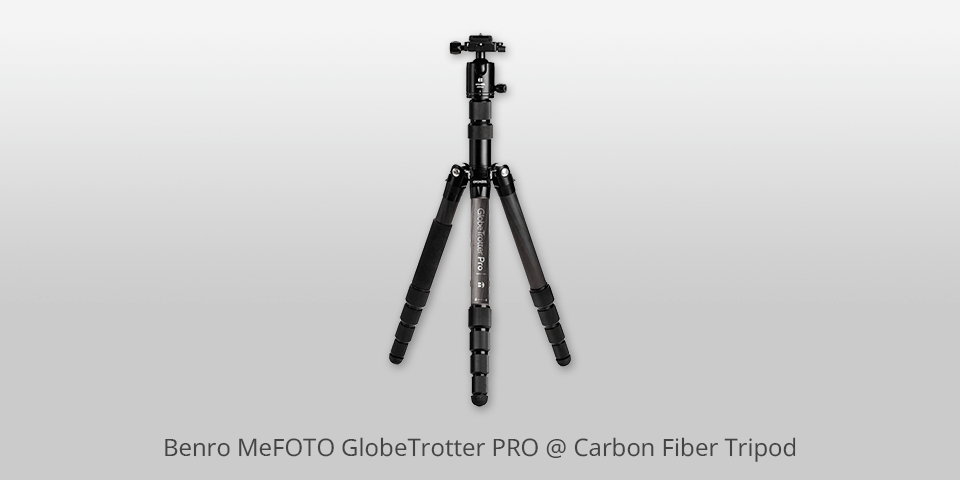
Head Type: Ball | Min Height: 5" | Max Height: 51.3" | Max Weight: 8.8lbs
Benro MeFOTO GlobeTrotter PRO has a compact design and an incredible feature set making it a great choice for lightweight travel photography. It also offers a recessed center column hook and a center section that can be reversed to allow low shooting angles.
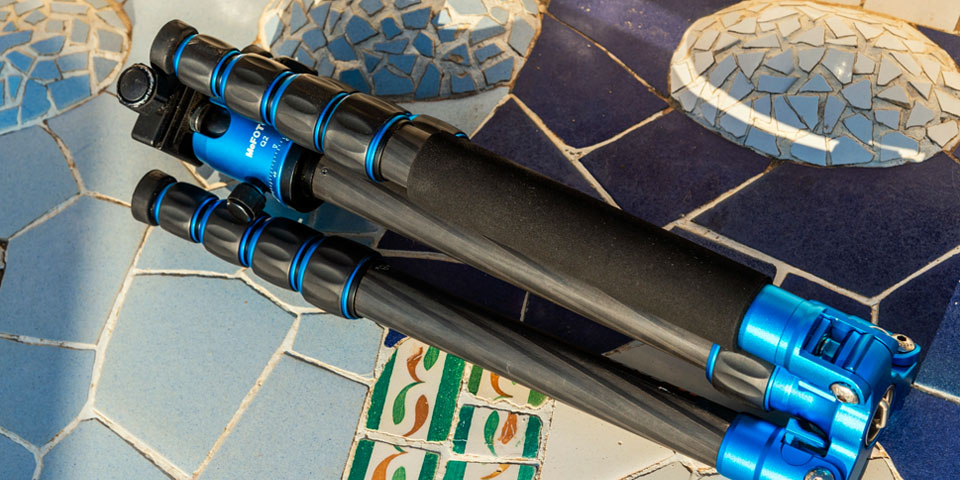
One of the biggest advantages of this carbon fiber camera tripod is its lightweight design. It is made of a combination of aluminum and carbon fiber, which makes it very easy to carry around.
However, there are some disadvantages to this tripod. For example, its simple push-in/pull-out type of leg angle lock can be a bit frustrating to use, and it doesn’t have a short column. The leg angles are also limited to 24 and 64 degrees, which is a shame.
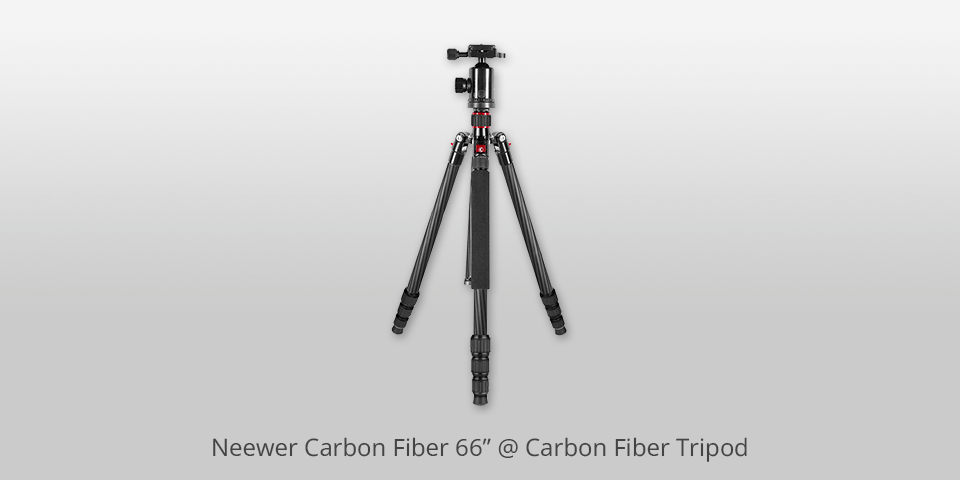
Head Type: Ball | Min Height: 22" | Max Height: 66" | Max Weight: 26.5lbs
This tripod under 200 dollars is made from 10 layers of 100% carbon fiber, making it both lightweight and durable. It also has a ball head that you can use without having to get an additional one, and it features a center column that can be removed for more flexibility.
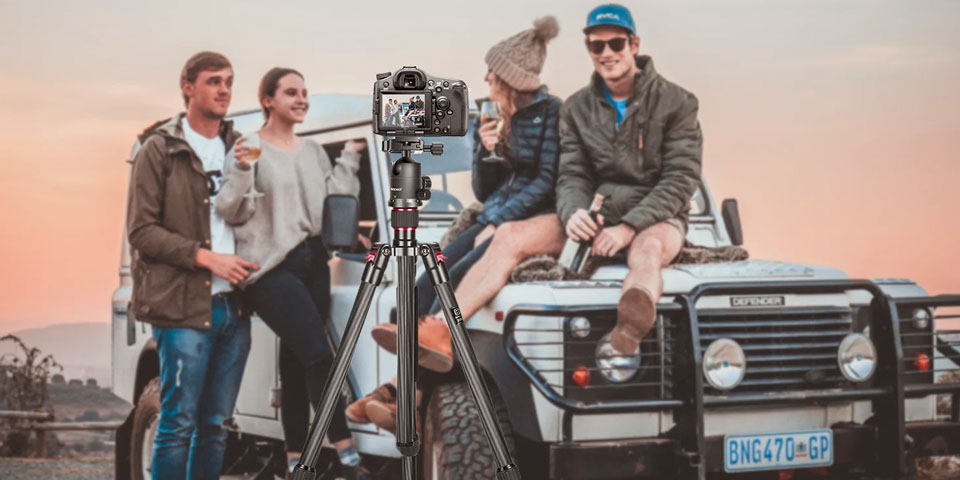
It's also very affordable, which is a big plus for those who are just starting out in photography or don't want to spend a lot of money on their gear.
However, there are some disadvantages to this lightweight carbon fiber tripod as well. The twist locks on the legs and center column can be a bit slow to use, which might be frustrating for some photographers.
The quick release plate is also a bit small, which can make it difficult to mount larger cameras or lenses.
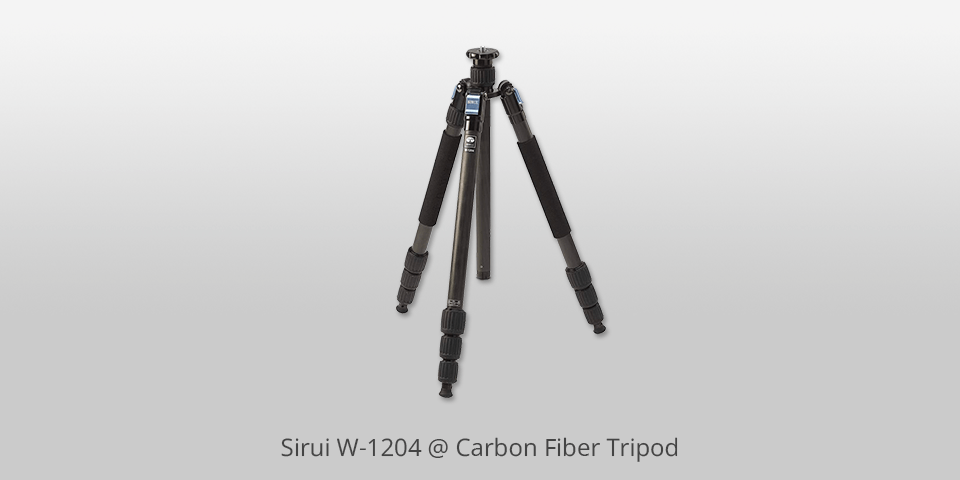
Head Type: Ball | Min Height: 5.7" | Max Height: 65" | Max Weight: 33.1lbs
First off, let me tell you that this model is a great option for those who are looking for a lightweight carbon fiber tripod that can still handle heavy cameras and lenses. One of the standout features of the Sirui W-1204 is its semi-automatic leg angle adjustment button, which makes it incredibly easy to set up and position. The twist-lock joints also make it easy to adjust the height of the tripod quickly.
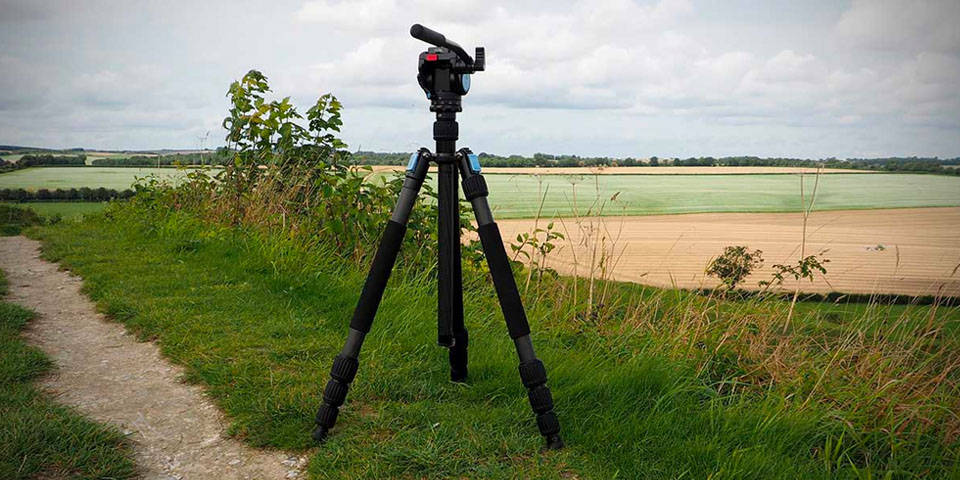
I also appreciate its awesome low center of gravity, which makes it great for low-light photography and shooting on uneven surfaces. Additionally, the retractable metal spikes on the rubber feet have come in handy when I've needed a bit more grip on rocky terrain.
However, I have noticed some downsides to this tripod for astrophotography. One issue I've had is that the ball head can sometimes slip, particularly when I'm using larger lenses.
Additionally, while the stabilizing hook is a nice addition, I've found it to be a bit flimsy and not as useful as I had hoped.
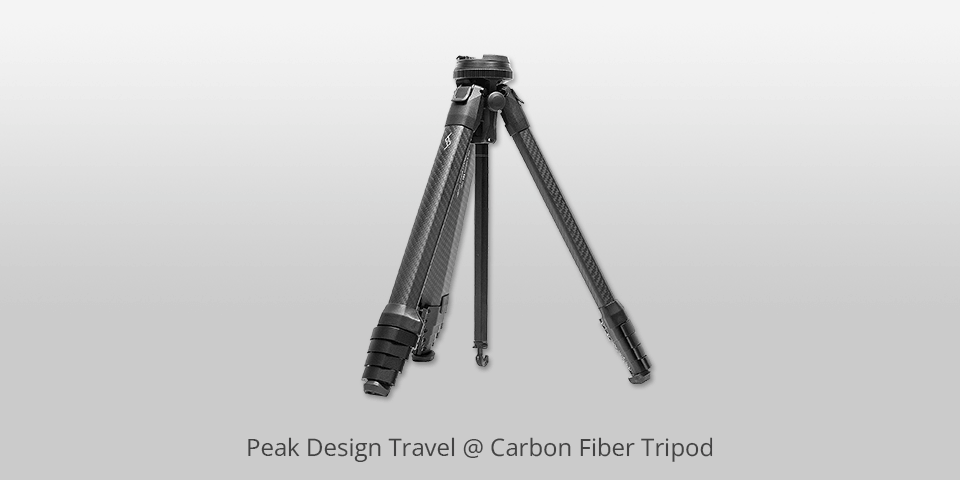
Head Type: Ball | Min Height: 5.5" | Max Height: 60" | Max Weight: 20.1lbs
This carbon fiber tripod is incredibly compact and lightweight, making it perfect for travel. It combines the legs and center column, making it incredibly stable and easy to use. The stem of the head nestles between the tops of the legs when they collapse, ensuring no protrusions and making the tripod very easy to store.

Another big plus is that the ball head is removable and magnetic, which means it can be quickly attached or detached with one hand. This is great for photographers who need more precise control over camera angles while shooting.
However, there are also some disadvantages to this tripod for wildlife photography. One problem is that it can be a bit difficult to get the center column and ball head assembled properly with one hand. This can be frustrating if you're used to other tripods that use a unique camera plate.

Head Type: Ball | Min Height: 24" | Max Height: 79" | Max Weight: 26.5lbs
First of all, let me start by saying that this is a fantastic carbon fiber tripod for anyone looking for a reliable and lightweight option.
One of the standout features of this model is its patented premium die-cast base and hexagonal center column, which make it incredibly flexible and versatile. This allows you to get those unusual shots, such as macro photography, that you might not be able to achieve with other tripods.

The GEEKOTO CT25Pro is also very durable, thanks to its carbon fiber legs and eight layers of high-density polymer. It's compact enough to fit in your backpack when not in use and comes with a quick-release plate with a 1/4-20 thread, so you can easily attach your camera.
However, there are a few downsides to this tripod that are worth mentioning. For example, the green bubble level on top of the tripod head isn't always 100% accurate, so you might need to correct your perspective in post-processing.

Head Type: Ball | Min Height: 12.5" | Max Height: 61.4" | Max Weight: 35.2lbs
This carbon fiber tripod comes with interchangeable rubber feet and stainless steel spikes, a tool kit, and a deluxe carrying bag with a shoulder strap.
It's easy to adjust to various lengths with half-turn twist locks and can accommodate up to 35.2lbs, making it an ideal choice for professional photographers who require a sturdy, lightweight device that can withstand heavy loads and long shooting sessions.
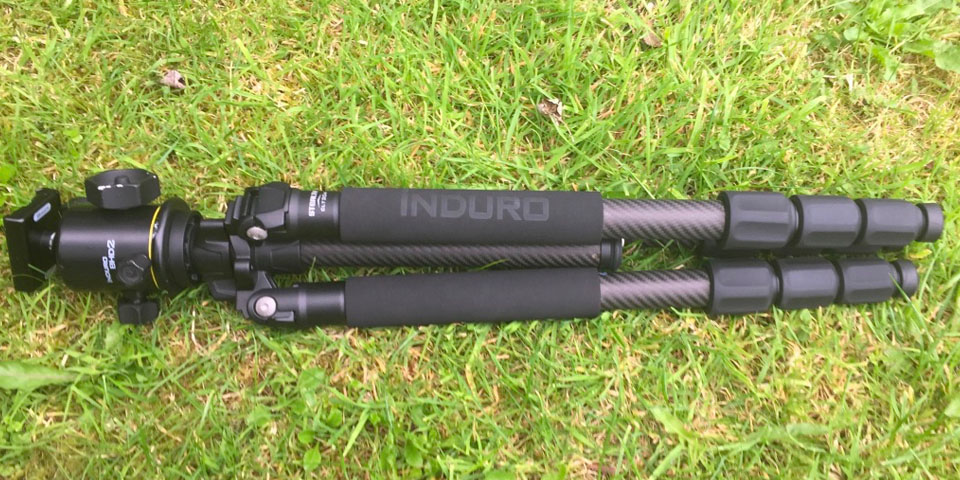
Moreover, it accepts the full line of Grand Induro accessories, including a double-ended hand crank, leveling base, and video bowl. This makes it a versatile and customizable option for photographers who want to tailor their gear to their specific needs.
However, there are some disadvantages that I've experienced while using this tripod for vlogging. Firstly, it's not as durable as some other high-end tripods on the market. Also, the legs can be a bit flimsy, and you have to be careful when extending them to avoid any wobbling.
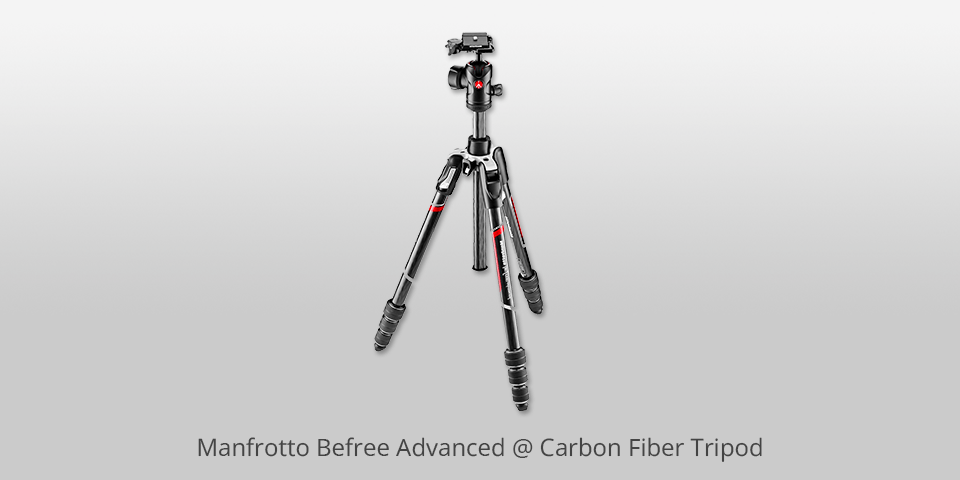
Head Type: Ball | Min Height: 16" | Max Height: 59" | Max Weight: 19.8lbs
Firstly, let me just say that this device is a great option for anyone who wants a lightweight carbon fiber tripod for their needs. One of the main advantages of this tripod is the twist locks on each leg section. They're very strong, and the rubber grips on them provide plenty of purchase when using them.
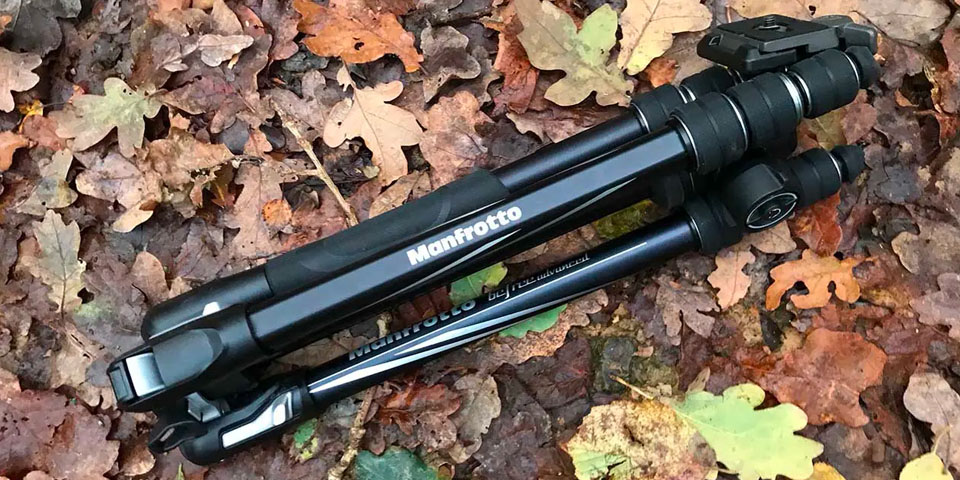
Another great feature of this budget tripod is the center ball head. It's sturdy, with an independent pano knob for capturing stunning landscapes.
However, there are a few disadvantages as well. Firstly, the legs can be a bit stiff to extend and retract, which can be frustrating when you're in a hurry. Additionally, the tripod can be a bit wobbly when fully extended, which can make it difficult to get sharp shots.
| IMAGE | NAME | FEATURES | |
|---|---|---|---|

|
Manfrotto MT055CXPRO4
OUR CHOICE
|
CHECK PRICE → | |

|
Benro Mach3 TMA48CXL
DURABLE
|
CHECK PRICE → | |

|
3 Legged Thing Leo 2.0
VERSATILE
|
CHECK PRICE → |
The material from which photographic tripods are made is only one of the most important criteria for choosing the best device.
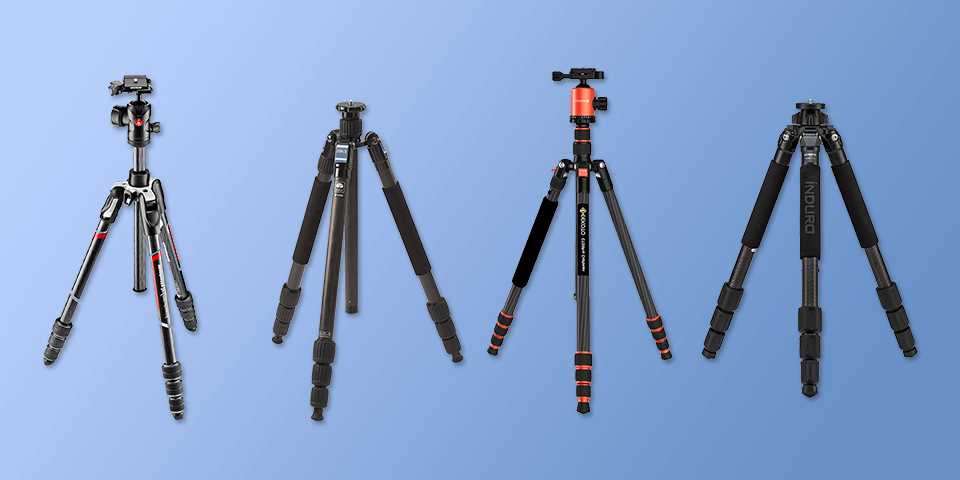
Maximum load. You should take into account the maximum weight of the equipment with which it can cope and the weight of your camera. As a rule, many popular tripod brands indicate the maximum load capacity in the technical characteristics section.
Height adjustment. The ability to adjust the height and position of the stand is a very important characteristic when searching for the best carbon fiber tripod. The high stand can help you get a great overview. If you are engaged in macro shooting, it may be difficult to focus while holding the camera in your hands.
Folded length. The size of the folded video tripod is of great importance. Do not forget that you will have to put it in a small bag or backpack. Choose devices with legs that fold up in the opposite direction to save some space in your bag.
You should decide what kind of head is perfect for you and your equipment, for example, ball head gimbal, tilted head (pan) or a fluid head.
Feet. Modern, improved stands have the ability to complement the legs with spikes or rubber feet, depending on the working conditions and the surface.
For example, if you want to put a carbon fiber tripod on a hard surface, it is better to use spikes. If you work indoors, give preference to rubber feet. By the way, standard rubber feet are well suited for work in rainy weather conditions.
Head mounts. As a rule, tripod heads and mounts for them are sold separately. In fact, not all heads can work with different camera models.
Stability. The main function of any tripod is image stabilization during video recording or photo shooting. You must admit, it is very difficult to hold the camera in your hands for a long time.
When selecting the best carbon fiber tripod, pay special attention to stability. In fact, not all stands are equally reliable. Explore the design of the legs and make sure that they are really stable and durable. Also, make sure that all the details of the device are fixed securely.

Quick-release system. Manufacturers try to provide photographers with the handiest and quickest way to attach/detach all types of cameras, offering them a new small removable plate on a camera or a lens, which can be secured on the head of a tripod.
The best available option nowadays is the Arca-Swiss Quick Release System. It is made of durable aluminum, so it will work longer than plastic counterparts. The Arca-Swiss Quick Release System allows attaching your camera to a tripod without rotating anything.
You just need to attach a quick-release plate to your camera and slide it into a clamp. The whole process doesn’t require special skills, but brings awesome results.
Leg angle range. As usual, you need to put the legs quite widely to work with many carbon fiber tripods. However, some photographers and videographers often are in limited conditions, for example, in very cramped spaces. Therefore, they need devices with a wide leg angle range.